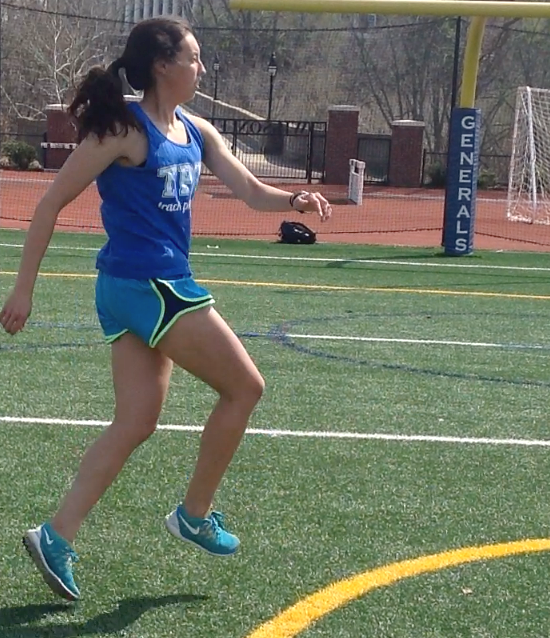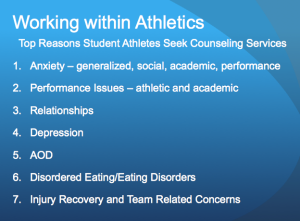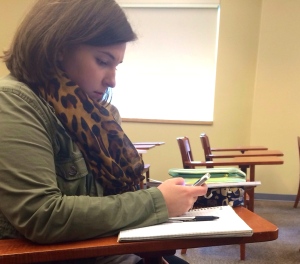Student-athletes have a lot on their plate. Not only are they required to dedicate hours on end towards their sport but they also must balance academics and social life.
For athletes at W&L, some think that their sport provides them with stress relief while others think that it increases their stress. Dana Lee ’17, a member of the track and field team, finds it difficult yet possible to balance academics and track.
“It’s a big mental barrier to know that you have to physically exert yourself at practice but afterwards you have to go to studying,” she said. “It’s not easy, but it’s definitely manageable.”
See more of Dana Lee’s story here:
Genny Francis ’16, a member of the women’s tennis team, understands the difficulties of being a student-athlete. Francis spends a minimum of 15 hours per week in practice and at tournaments.
Francis recalled spending a total of 25 hours at the Fab 5 Tournament, which was held at W&L in March. She said that traveling to tennis matches is one of the most difficult parts of being on the team.
“It can be stressful traveling during school and missing class,” she said. “It takes out a lot of time from my studies and it’s hard to do homework on the van.”
On the other hand, some students think that their sport provides much needed stress relief from academics. One such athlete, Brandon Taylor ’15, a member of the football team, spent about 19 hours per week in practice and in games during the season. He said that the time commitment was a good stress relief from his rigorous academic schedule.
“I imagine it’s a little different for everyone, but for me, [football] definitely reduced my stress,” he said. “It was good to focus on something other than school for about three hours a day.”
Jamie Hayes ’17, a member of the swim team, agrees. Hayes spends about 15 hours per week in practice and said that swim meets last from 2-8 hours per day, depending on the size of the meet.
“Going away to meets is somewhat stressful, but I find practice itself and being on the team to be a stress reliever,” he said. “After I swim I come out with a better mindset to face any challenges I might be facing.”
However, in some cases, the demands placed on student-athletes can be outright exhausting. According to the American College Health Association, college athletes can be more susceptible to mental health issues than others. They must balance academics and social lives while also competing in their sport at a higher level. The ACHA suggests that student-athletes might be more reluctant to get help than others for fear of letting their coaches or teammates down or for fear that a diagnosis might prevent them from competing.
Depression, anxiety, eating disorders and substance abuse are the most common culprits in regards to mental health issues for student-athletes. Injury, such as concussions, or the inability to participate in team activities is most commonly linked to symptoms of depression. Depression is also closely tied to overtraining, exhaustion, poor performance and inadequate nutrition. Anxiety mostly affects athletes who obsess over their performance or who have perfectionist attitudes.
Eating disorders such as anorexia nervosa, bulimia nervosa and binge eating have the most widespread effects on student athletes. Symptoms of eating disorders in student-athletes often include: decreased energy, increased fatigue, more frequent injuries and longer recoveries after workouts.
Check out the ACHA’s website to learn more by clicking here.
Substance abuse is also a prevalent issue among student-athletes. According to a 2009 survey of NCAA member institutions, 83.1% of student-athletes said that they had consumed alcohol in the last 12 months and 59% said that they had consumed more than five drinks in one sitting.
To read more about mental health disorders, click here.
Check out some interesting data collected by the University of Michigan Health System in 2013:

Mental health disorders affect athletes at universities nationwide and those at Washington and Lee University are no exception. W&L’s Athletic Director, Jan Hathorn, said that the University has and continues to deal with mental health issues among its athletes. Hathorn attributed such issues to the environment on campus.
“It’s a competitive environment here and for the most part that can be very positive,” she said. “But that can also bring forth things that are difficult for students to handle about themselves.”
In her coaching experience, Hathorn has dealt with issues such as eating disorders, anxiety, depression and homesickness among her players. She stressed the importance for coaches to show sensitivity and concern towards struggling athletes.
“You can’t help but care deeply about the young men and women that you coach,” she said. “You care about them to the point where you don’t want to see any of them suffering.”
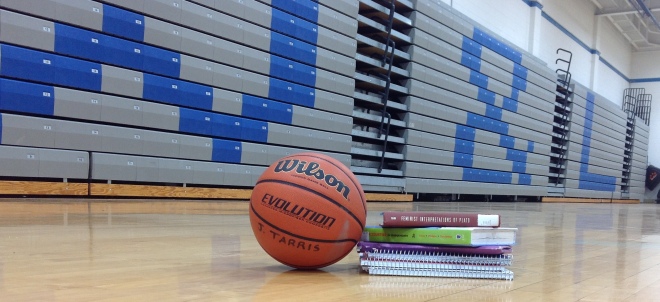 Hathorn said that the close relationship between W&L’s Athletic Department, Health Center and Counseling Center allows athletes to get help quickly and easily. Whenever athletes have an issue, they are first referred to Dr. Jane Horton, Director of Student Health and Counseling Services. After assessing the player’s situation, Dr. Horton either provides the athlete with medical treatment or refers him/her to the Counseling Center.
Hathorn said that the close relationship between W&L’s Athletic Department, Health Center and Counseling Center allows athletes to get help quickly and easily. Whenever athletes have an issue, they are first referred to Dr. Jane Horton, Director of Student Health and Counseling Services. After assessing the player’s situation, Dr. Horton either provides the athlete with medical treatment or refers him/her to the Counseling Center.
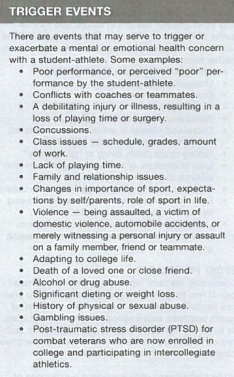
“As a medical provider, I might work with the student and counselor to consider medication treatment if they meet diagnostic criteria for a condition such as major depression,” Horton said. “But the counselors would be the ones to provide psychological treatment.”
The Counseling Center addresses a wide scope of issues including anxiety, depression,eating disorders, perfectionism and stress management. One of W&L’s clinical psychologists, Dr. Christy Barongan, works closely with athletes. She has observed that athletes often defend their mental health issues under the pretense of improving their athletic performance.
“I wouldn’t say that athletes are more susceptible to mental health issues, but the symptoms of [issues] are reflected in their role as an athlete,” she said. “For example, athletes are more likely to say that they were trying to lose weight to enhance performance rather than because they were unhappy with their weight or body image.”
She said that athletes who have chosen to quit or who can’t play due to injury are often treated for depression.
